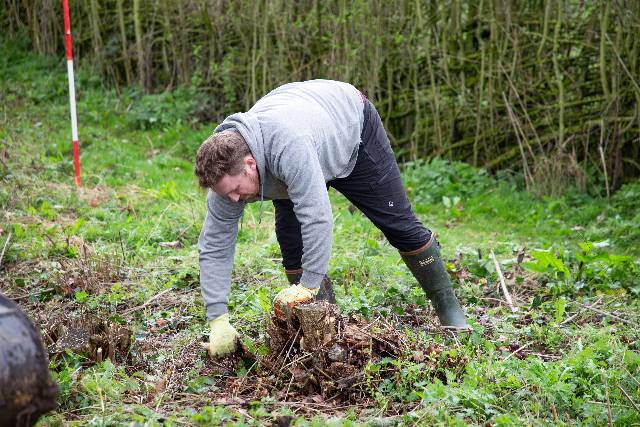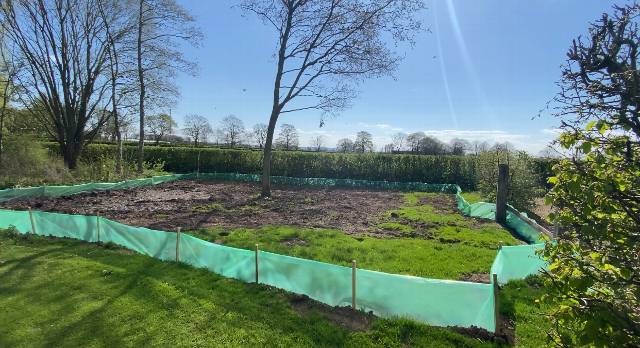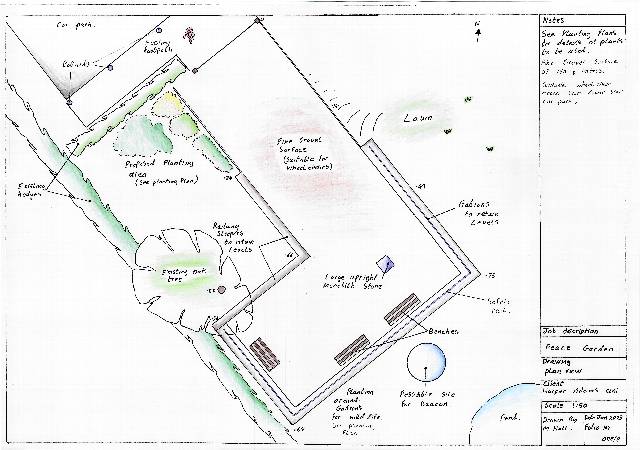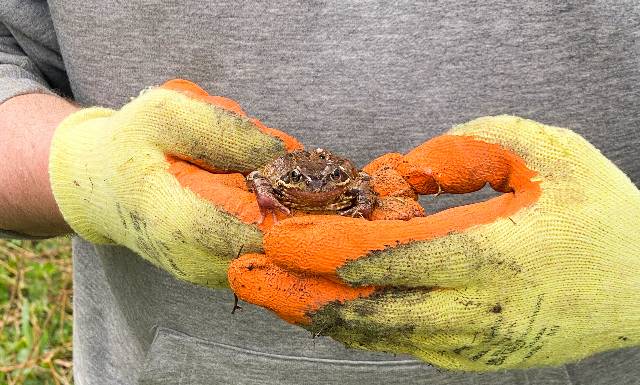 Careers Fair 2024: our social media roundup
The annual Harper Adams Careers Fair has returned – offering a wealth of opportunities to students. …
Posted
Yesterday
Careers Fair 2024: our social media roundup
The annual Harper Adams Careers Fair has returned – offering a wealth of opportunities to students. …
Posted
Yesterday

Following preliminary work and a detailed environmental assessment to develop a work plan that ensures the protection of the habitat for protected species including great crested newts, the construction phase of the Harper Adams Peace Garden started at the beginning of the Easter vacation.
“There have been a few complications, because of the area and its sensitivity to newts, so we had to go through quite a bit of paperwork and mitigation to be able to get to the initial dig,” explained Project Manager Mark Hall.
Following eDNA surveys last carried out in 2019, Great Crested Newts (GCN) were confirmed to be present in the pond.
While no work within the pond itself is planned, the surrounding groundwork could pose a risk for the protected species, so the timings of operations have been carefully planned out to protect them, including ensuring work on the initial development of the site took place when there was the least likelihood of newts being present on-land.
Lecturer in Forestry and Woodland, Nick Covarr said: “General guidance is that newts will emerge and be active around ponds between February and April, before migrating into the pond in May and June. However, this is a generalisation and realistically, newts may be present in the surrounding habitat at any stage in the year.”
In order to begin construction, the removal of overgrown vegetation was required – an intensive operation that required the guidance of an approved ecologist, as the exercise carried a risk of causing disturbance and harm to existing habitats.
Once the project was given the green light, licensed Great Crested Newt surveyor and Senior Ecologist, Dean Lefeuvre from , attended the site to conduct a fingertip search of the area to allow for a newt fence to be installed, which will prevent the newts re-entering while construction is taking place.

Speaking on site as work began at the end of March, Dean said: “We have been commissioned by 91Pro to assist with the construction of a Peace Garden next to the pond, which has known populations of Great Crested Newts, which are a protected species. We are doing the works in a sympathetic way that will ensure that no harm comes to them, and we can maintain the favourable conservation status of the species in this area.
“The area in front of the pond will be cleared under an ecological watching brief by myself and we’ll be erecting a fence around approximately a 100 square metre area to then prevent newts coming back into the site once the area has been cleared.”

Now that this stage has been completed, work can begin on creating the garden as shown in the project plans.
The garden will be located on the outer, most northwest edge of the land next to the pond area, near to the main building to allow access. Of the total land and water area set aside for wildlife in this area of the university, only a small section will be used for construction of the garden – to allow for the majority to be left undisturbed.

The design has taken several factors into consideration, including accessibility requirements, the location being a quiet space and the linking up of surrounding wildlife habitats, resulting in a high-quality habitat for the newts and other wildlife.

Related Posts
 Careers Fair 2024: our social media roundup
The annual Harper Adams Careers Fair has returned – offering a wealth of opportunities to students. …
Posted
Yesterday
Careers Fair 2024: our social media roundup
The annual Harper Adams Careers Fair has returned – offering a wealth of opportunities to students. …
Posted
Yesterday
 Preparing our students for an AI future
Harper Adams Associate Pro Vice-Chancellor (Learning, Teaching and Digital) Professor Lydia Arnold has just spoken at a major international …
Posted 11 November
Preparing our students for an AI future
Harper Adams Associate Pro Vice-Chancellor (Learning, Teaching and Digital) Professor Lydia Arnold has just spoken at a major international …
Posted 11 November
 Listen: Discussing Discovery Day with the BBC
Plans for an exciting Discovery Day at 91Pro, Telford have been set out on the BBC by the University’s Vice-Chancell …
Posted 31 October
Listen: Discussing Discovery Day with the BBC
Plans for an exciting Discovery Day at 91Pro, Telford have been set out on the BBC by the University’s Vice-Chancell …
Posted 31 October
 Listen: Professor discusses impact of poor 2024 wheat harvest with BBC's Farming Today
BBC Radio Four’s Farming Today programme has been looking at the 2024 wheat harvest this week – and the impact a year of bad wea …
Posted 17 October
Listen: Professor discusses impact of poor 2024 wheat harvest with BBC's Farming Today
BBC Radio Four’s Farming Today programme has been looking at the 2024 wheat harvest this week – and the impact a year of bad wea …
Posted 17 October
- You are here
- News
- Blogs
- All Harper
Cookies on the 91Pro website
We use cookies to ensure that we give you the best experience on our website. If you continue without changing your settings, we'll assume that you are happy to receive all cookies on the website. However, you can change your cookie settings at any time.

